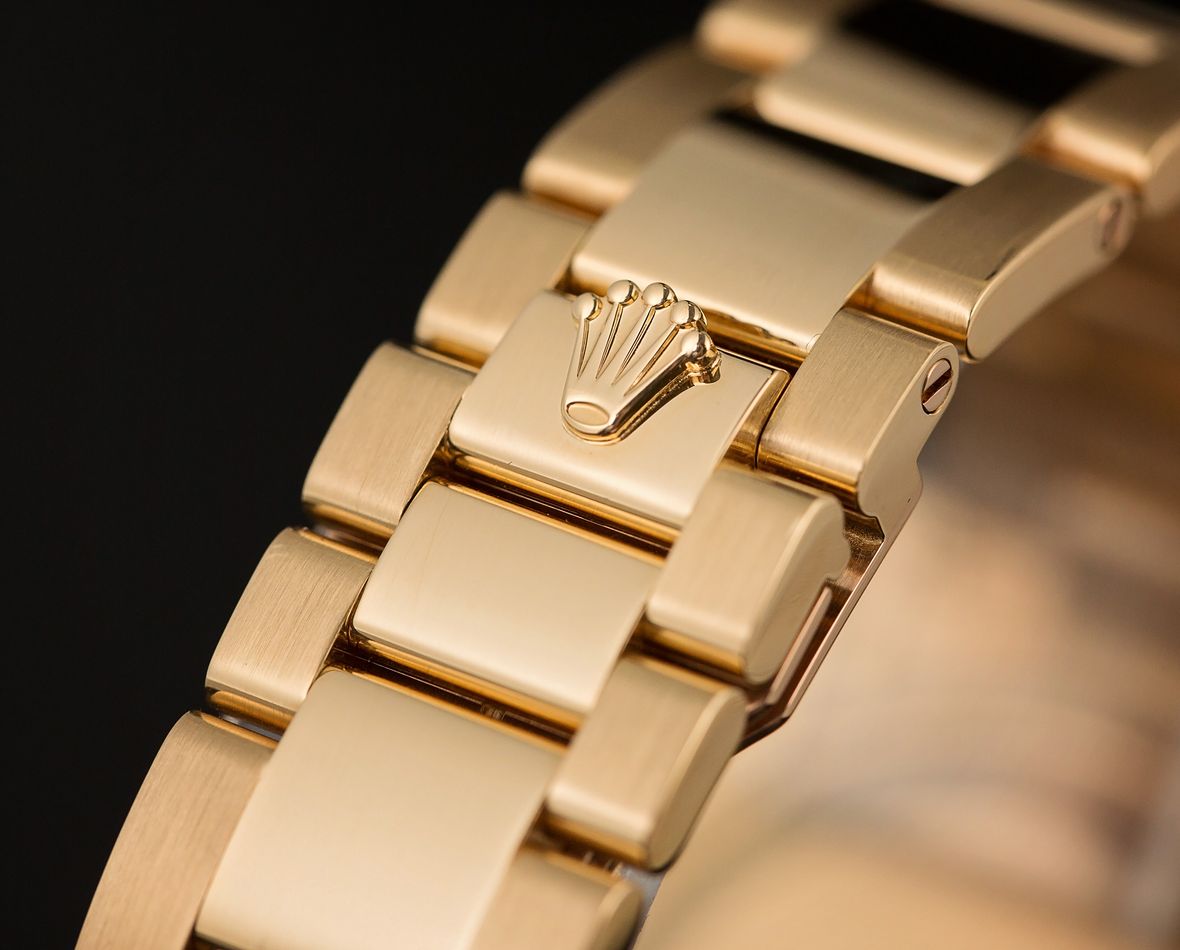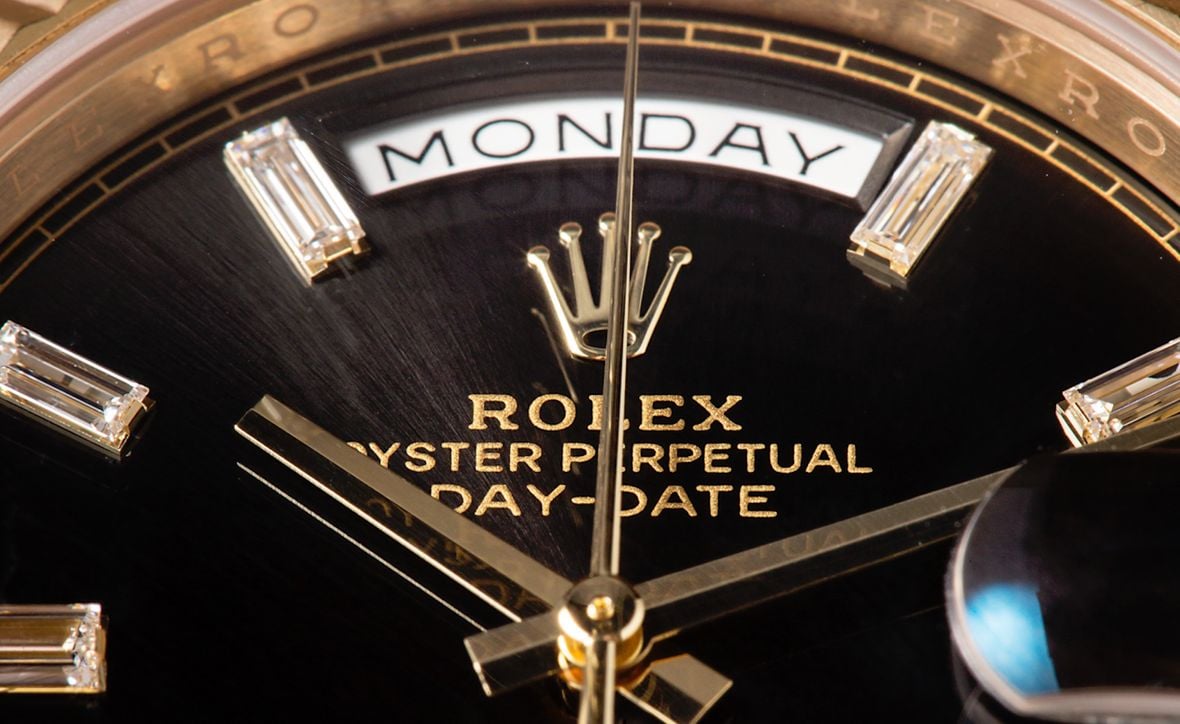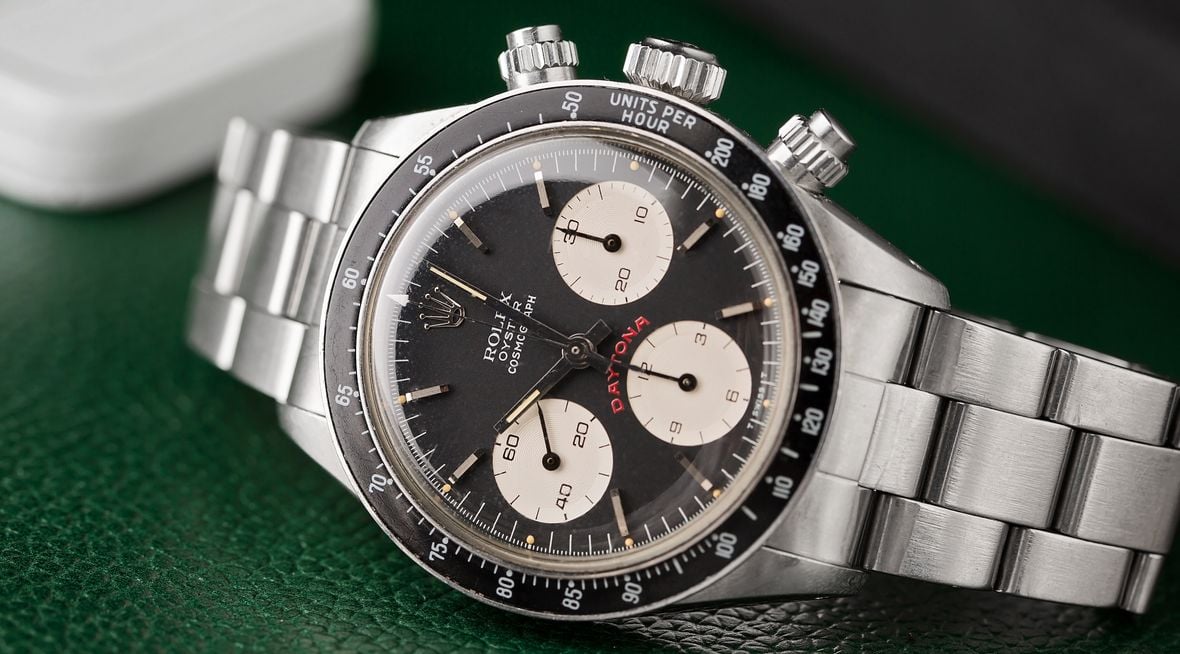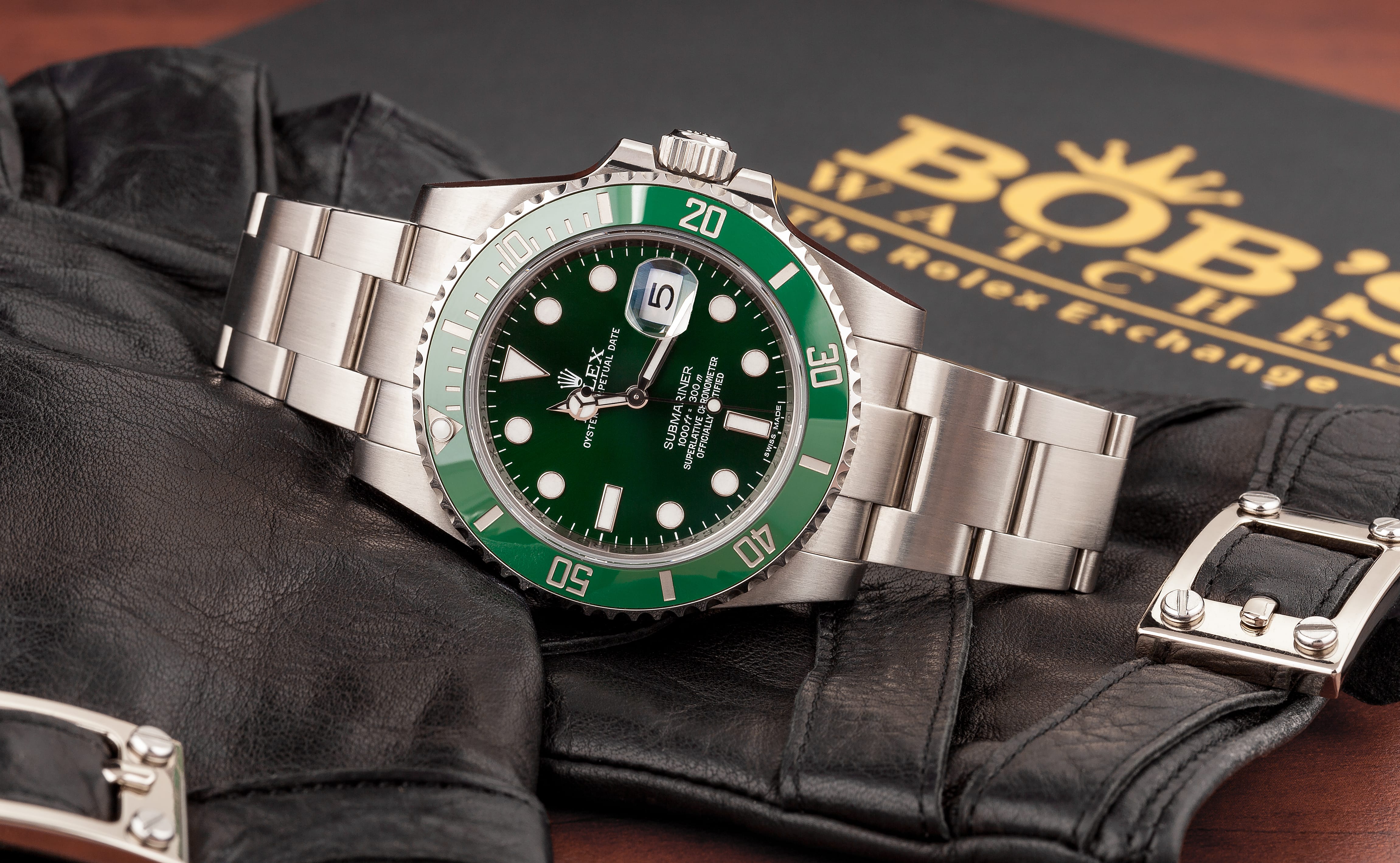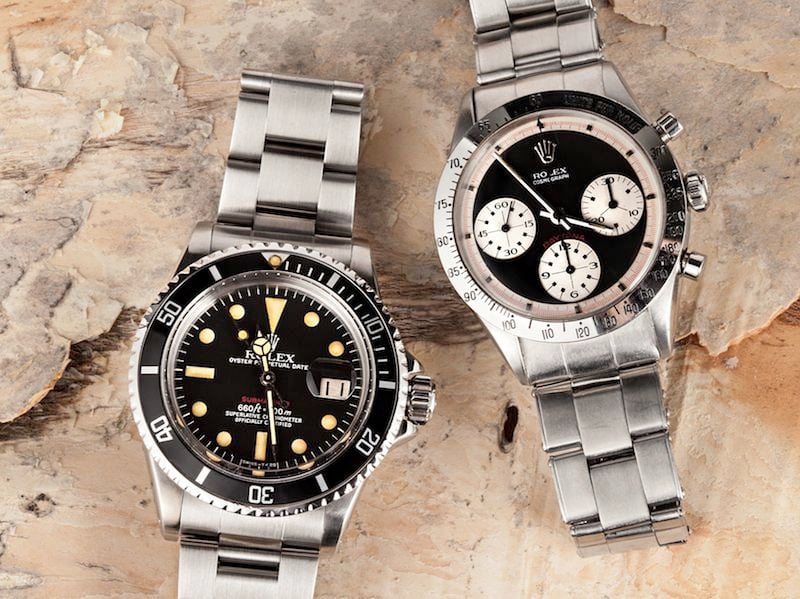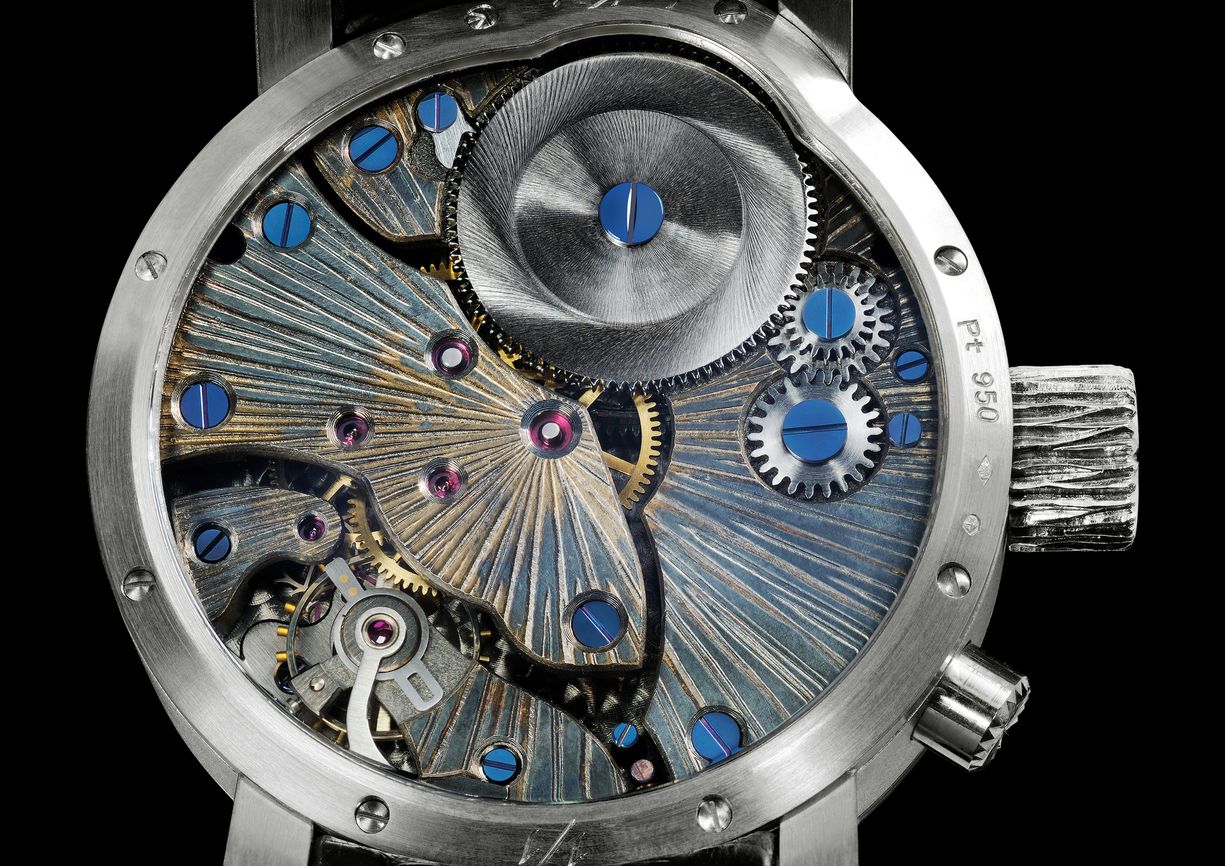On July 2, 1958, Hans Wilsdorf divulged the origins of his famous watch brand during a speech given to mark 50 years of the name: “A genie whispered ‘Rolex’ in my ear.” Whether or not that enchanting tale is fact or fiction, the name Rolex and its accompanying crown insignia did forge a magical path to become one of the most iconic logos in modern history.
Hans Wilsdorf’s company did not start as Rolex; it was initially named Wilsdorf & Davis when it was established in 1905. However, the name Rolex was trademarked in 1908 and the five-point Rolex crown (also known as the Rolex coronet) was registered in 1931. The all-caps Rolex name sitting under the gold crown eventually became the company’s logo, and aside from some variations in font and coronet shape, it has remained largely the same over the last nine decades. Today, the iconic Rolex watch line features the logo on various components – but it wasn’t always this way. Join us as we dig into the details to uncover the history of the Rolex logo.
Rolex Logo History Revealed: All Shapes, Sizes & Placements
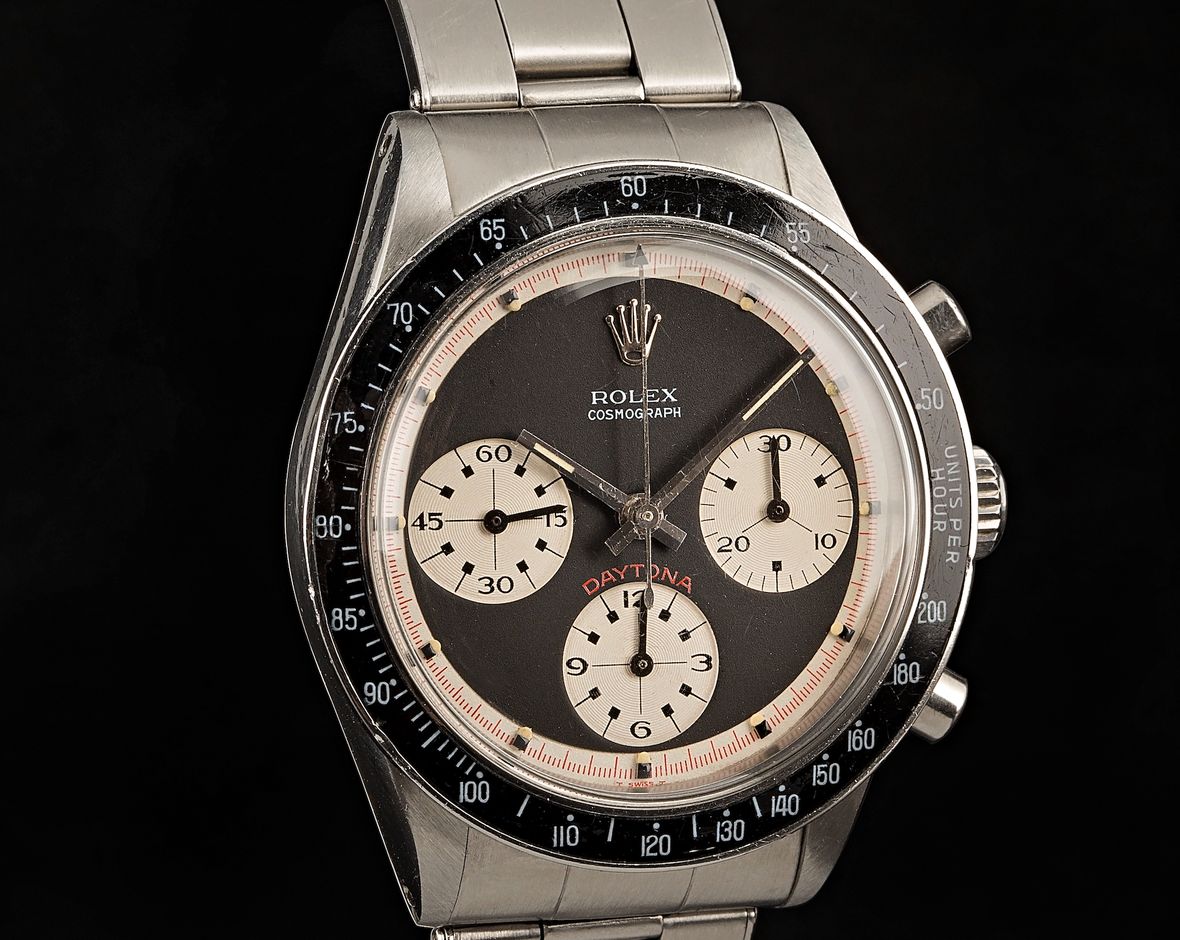
From Wilsdorf & Davis to Rolex
1905 – The founding of Wilsdorf & Davis in London.
1908 – The name “Rolex” is filed and trademarked in Switzerland.
1913 – The Rolex name is trademarked internationally.
1919 – Rolex moves its headquarters to Switzerland.
1920 – Montres Rolex S.A. is registered in Geneva.
1926 – The waterproof Oyster watch debuts and the Rolex name is now inscribed on all of the company’s watches.
Click here for our Rolex Watches Ultimate Buying Guide.
In 1905, a young Hans Wilsdorf partnered with his brother-in-law, Alfred James Davis (who was married to Ana Wilsdorf) to start a watch company in London, England. This company, named Wilsdorf & Davis, specialized in distributing wristwatches not only in Great Britain but also throughout the British Empire. Wilsdorf & Davis sourced watch parts from various Swiss partners, including precise movements from Aegler in Bienne, Switzerland. Three years later, on July 2, 1908, Wilsdorf & Davis trademarked the name “Rolex” in Switzerland and the “Rolex” trademark was then registered internationally in 1913.
Wilsdorf penned “The Story of Rolex” in 1948, where he wrote, “Up to 1915, London was our headquarters for distribution to all parts of the world. But when the British Government of the day imposed a 33 1/3 percent customs duty on watches, we had to move our headquarters to Switzerland. There, in 1919, I founded the present Company.” Montres Rolex S.A. was registered in Geneva, Switzerland in 1920.
While the Rolex trademark was registered in 1908, the name didn’t immediately appear on the watches since retailers typically wanted to place their own names on the watches that they offered for sale. Wilsdorf began cautiously, “At first I ventured to inscribe “Rolex}” on one watch in every six, hoping that this watch would get through and be sold.” He eventually branded more and more watches with the Rolex name and by the time the legendary waterproof Oyster debuted in 1926, Wilsdorf decided that all his watches should proudly bear Rolex on the dial, case, and movement.
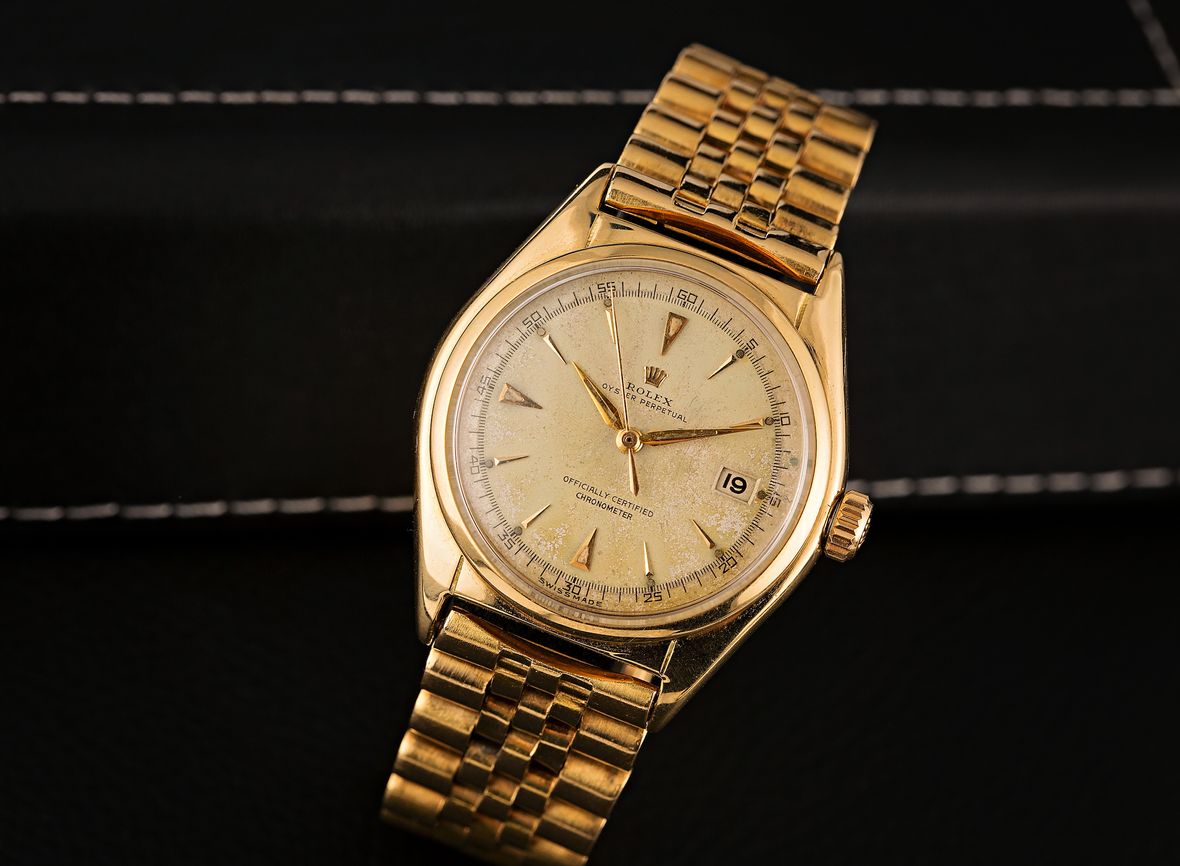
The Origins of the Rolex Name
Just how did Rolex get its name and what is the Rolex definition? While trying to figure out the Rolex meaning, some speculate that the name Rolex was inspired by the French phrase, “Horlogerie Exquise,” which roughly translates to “exquisite watchmaking” in English. Others hypothesize that the name was chosen because it is reminiscent of the sound that a watch makes when being wound.
However, according to company lore, Hans Wilsdorf clearly expressed the origins of the name exactly 50 years after he coined it. “I tried combining the letters of the alphabet in every possible way. This gave me hundreds of names, but none of them felt quite right. One morning, while riding on the upper deck of a horse-drawn omnibus along Cheapside in the City of London, a genie whispered ‘Rolex’ in my ear.”
Wilsdorf & Davis picked the name Rolex because it was “easy to pronounce in multiple languages” and “was hard to misspell” due to its phonetic nature. Since the name was short, it looked clean and uncluttered when printed on watch dials; and over the years, it has become inseparable from the modified Garamond typeface in which it is frequently printed.
Although Rolex watches had a great company name, Wilsdorf still needed a great company logo. The five-pointed coronet insignia followed in the 1930s.
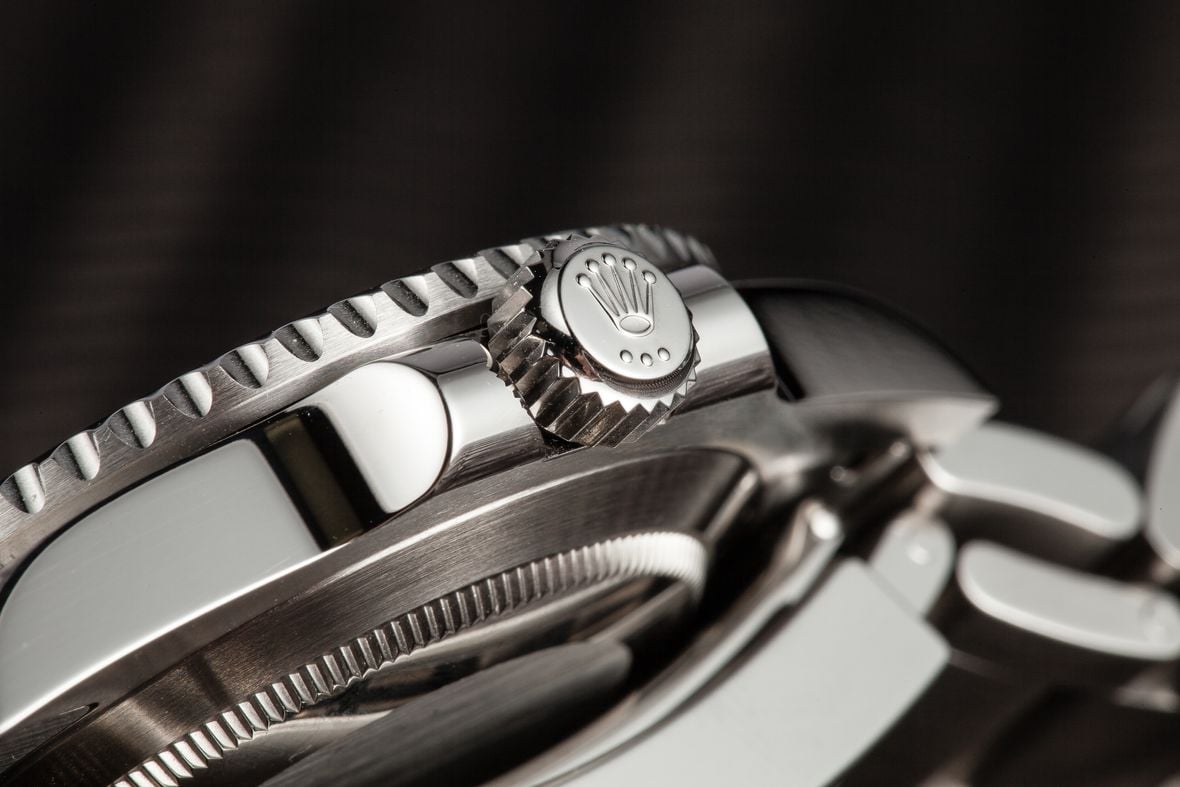
The Rolex Coronet
The Rolex crown, the now-famous logo of the brand, was registered in 1931 and Rolex began using the crown logo on watch dials in the 1930s. If you look at the earliest Rolex Oyster watches from the 1920s and the first Oyster Perpetual watch, you’ll see that the five-pronged coronet is not on the dial – only the Rolex name. However, by the time the Datejust was released in 1945, the crown was certainly present on the dial, right above the Rolex name.
In the 1950s, Rolex began marking the watch winding crowns with the coronet emblem too. Around the same time, Rolex began replacing the 12 o’clock hour marker with an applied crown logo on some models like the Datejust, Oyster Perpetual, Air-King, and others.
Similar to the name, many theories exist about the origins and secret meanings behind the Rolex crown. Some believe the five points represent the five fingers of the human hand; others believe that the crown is intended to represent five tree branches topped in pearls. However, Rolex makes no mention whatsoever of these theories, and they will likely all remain just speculations. Perhaps Hans Wilsdorf simply wanted to continue using a royal theme following the 1926 registration of the Tudor brand (named after the English royal house) by Veuve de Philippe Hüther for Hans Wilsdorf.
All theories aside, the crown perfectly encapsulates Rolex’s core values of excellence and exclusivity, while its five points mirror the five letters of the company name that frequently appears below it. Additionally, the coronet shape inherently carries with it connotations of honor and prestige, while also complementing one of the company’s slogans, “A Crown for Every Achievement.”
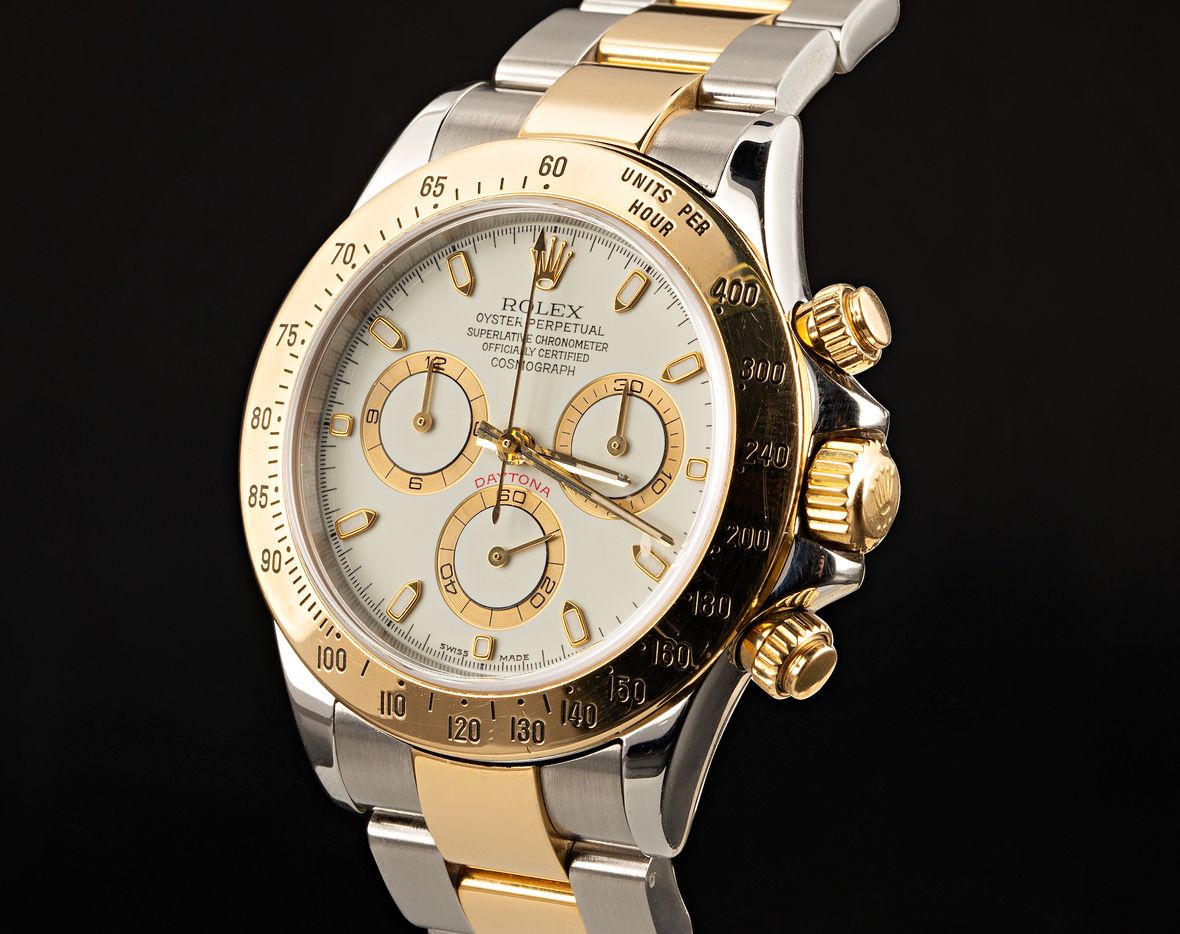
Design of The Rolex Logo
Over the years, the design of Rolex’s crown has changed slightly on the dial. Collectors have even coined some nicknames, like the Bart Simpson and the Frog Foot to distinguish these coronet variances.
However, the crown with the five points topped with round ends has always retained the core elements that make it instantly recognizable as the Rolex emblem. In terms of international, widespread recognition, the Rolex crown ranks among the most iconic logos of all time, along with those of Apple, General Electric, and Mercedes Benz.
Color Scheme
In the meticulously crafted Rolex logo, the brand showcases a sophisticated blend of Metallic Sunburst (#A37E2C) for the emblematic gold crown and Cadmium Green (#006039) for the renowned brand name, “ROLEX.” The gleaming gold of the crown epitomizes prestige and luxury, serving as a beacon of the brand’s unparalleled status in the watchmaking world. On the other hand, the deep green hue in the brand name isn’t just a design choice; it’s symbolic of wealth and prosperity, mirroring the brand’s rich heritage and commitment to excellence. Together, these colors paint a story of Rolex’s enduring legacy, elegantly conveying its values and vision in the luxury watch industry.
Symbolism
The iconic crown gracing the Rolex logo isn’t merely a decorative element; it’s a profound representation of power and prestige. Embodying authority and honor, the crown stands as a testament to Rolex’s commitment to crafting timepieces that are more than just functional – they are symbols of stature and excellence. This emblem succinctly captures the brand’s ethos, ensuring every watch resonates with a sense of distinction and superiority. Through this symbolic crown, Rolex seamlessly translates values of authority, honor, and unparalleled quality into each timepiece they create.
Design Evolution
Since the Rolex logo was trademarked in 1925, its design has stood as a testament to the brand’s commitment to timeless elegance, undergoing only two notable revisions. From its inception in 1905 until 1965, the logo sported its original look: a gold crown accompanied by green text with a golden outline. The Rolex symbol stood as a testimonial to the brand’s ever-growing popularity.
The period from 1965 to 2002 witnessed a shift; the crown’s hue transitioned from gold to bronze, while the iconic Rolex text transformed from its original green to a subdued greyish-blue, also shedding its original golden outline. Yet, in a nod to its storied past, the logo from 2002 to the present day revisited its roots with the classic gold crown and vibrant green font combination.
- 1905 – 1965: Original Logo.
- 1965 – 2002: Rolex changed the crown’s color from gold to bronze. The brand also changed the Rolex text from green to greyish-blue, plus removed the original golden outline in the text.
- 2002 – Present: The brand updated the colors to use the gold crown and green font (original color combination).
Logo Branding
The Rolex logo, with its iconic crown and unmistakable typography, serves as a beacon of luxury, precision, and legacy in the watchmaking world. More than just a symbol, it encapsulates the brand’s unwavering commitment to excellence and its storied history in horology.
Each detail, from the crown representing power and prestige to the distinct color choices, has been meticulously crafted to convey the brand’s ethos. As a hallmark of quality and sophistication, the Rolex logo has cemented its place as a quintessential emblem in the realm of luxury branding.
The power of the Rolex logo extends beyond its emblematic design; it is further magnified by the prominent figures who’ve chosen Rolex as their timepiece of choice. Icons like Sir Winston Churchill and Martin Luther King Jr. have been known to wear Rolex, demonstrating the brand’s intersection with history and influence.
In the realm of entertainment, luminaries like Paul Newman, Steve McQueen, and Marlon Brando sported Rolexes, forever entwining the brand with Hollywood’s golden age. Moreover, renowned explorers like Sir Edmund Hillary, who summited Everest, and Jacques Piccard, who plunged into the Mariana Trench, relied on Rolex watches during their historic endeavors. Each of these personalities not only enhanced the brand’s visibility but also reaffirmed its reputation as a watch suitable for both the elite and the adventurer.
Here at Bob’s Watches, we agree that the Rolex crown is perfectly fitting for a company specializing in Horlogerie Exquise. Each Rolex watch is made to exacting standards, using only the finest materials. In addition to serving as their iconic signature, the coronet logo that adorns every Rolex timepiece also serves as a subtle reminder that each Rolex is indeed, a “crown of achievement” for all who own one.
